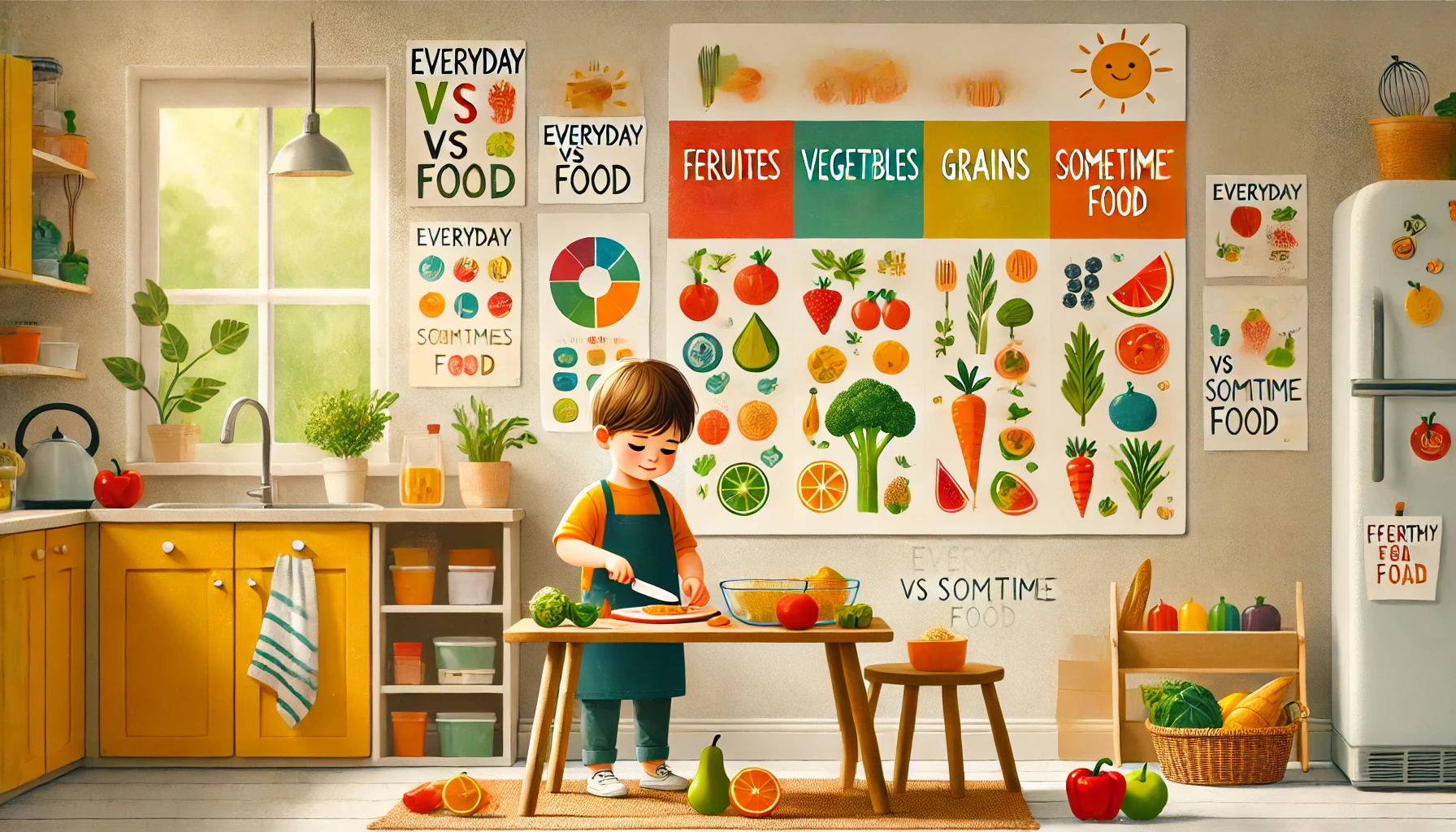Introducing young children to healthy eating habits helps them develop a positive relationship with food, supports physical growth, and builds the foundation for long-term wellness. Kids learn best through experiences, and teaching nutrition can be fun, interactive, and full of curiosity. The goal isn’t perfection—it’s helping them understand that food fuels their body, helps them grow, and can be enjoyed mindfully.
Why Nutrition Education Matters
- Supports physical and cognitive development
- Teaches lifelong healthy habits
- Reduces risk of picky eating and poor food choices
- Promotes energy and focus throughout the day
- Encourages family bonding around meals and cooking
1. Introduce Food Groups in a Fun and Visual Way
Help children understand different types of foods and what they do for the body.
Activity Idea:
- Use colorful food group charts or the MyPlate model to show how a balanced plate looks.
- Play a sorting game with toy foods or pictures: “What’s a fruit? What’s a protein?”
- Ask: “Which foods help you grow? Which give you energy?”
What Kids Learn:
- That variety matters in a healthy diet.
- What types of foods help different parts of their body.
- The fun in discovering new foods.
2. Involve Them in Meal Prep
Participation helps kids become curious—and less picky.
Activity Idea:
- Let your child wash vegetables, stir batter, or choose a fruit for snack time.
- Assign age-appropriate kitchen jobs.
- Talk about what ingredients do: “Spinach helps our muscles grow!”
What Kids Learn:
- That they can contribute to making meals.
- Where food comes from and how it’s prepared.
- Confidence and pride in their choices.
3. Use Stories to Talk About Food and Health
Books make nutrition relatable and exciting.
Activity Idea:
- Read books like The Very Hungry Caterpillar or Good Enough to Eat.
- After reading, talk about what the characters ate.
- Let your child draw their “super snack plate.”
What Kids Learn:
- How food choices affect how we feel.
- That learning about food can be fun.
- Vocabulary for talking about nutrition.
4. Practice Mindful Eating
Mindfulness helps kids tune into hunger, fullness, and flavor.
Activity Idea:
- Say: “Let’s eat slowly and notice the taste of each bite.”
- Encourage them to describe food using all five senses.
- Check in: “How does your tummy feel—full, hungry, or just right?”
What Kids Learn:
- To eat with awareness instead of distraction.
- How to listen to their body’s cues.
- That food is something to be appreciated.
5. Teach the Difference Between Everyday and Sometimes Foods
It’s not about restriction—it’s about balance.
Activity Idea:
- Sort foods into “everyday” (fruits, vegetables, whole grains) and “sometimes” (cookies, chips, soda).
- Talk about how treats are okay in moderation.
- Avoid using sweets as rewards or punishments.
What Kids Learn:
- That no food is “bad”—but some are best enjoyed in moderation.
- How to make balanced choices.
- That healthy eating includes flexibility.
6. Grow a Mini Garden Together
Gardening connects kids to food and nature.
Activity Idea:
- Plant herbs, lettuce, or cherry tomatoes in pots or a small garden.
- Let your child water and harvest what they grow.
- Talk about how food starts as a seed.
What Kids Learn:
- Where fresh food comes from.
- Patience and responsibility.
- A sense of ownership over healthy choices.
7. Encourage Tasting Without Pressure
Exploration leads to more openness over time.
Activity Idea:
- Use the “try-it” rule: “Just one bite, then you can decide.”
- Offer new foods alongside familiar favorites.
- Make it a game: “Let’s be food explorers today!”
What Kids Learn:
- That trying new things is part of growing.
- That they don’t have to like everything to be healthy.
- To be brave and curious about food.
8. Praise Healthy Choices and Curiosity
Celebrate effort, not perfection.
Activity Idea:
- Say: “I’m proud of you for trying something new!”
- Use a “Super Eater” chart with stars for tasting a new veggie or choosing water over soda.
- Talk at bedtime: “What healthy thing did we eat today?”
What Kids Learn:
- That small steps are worth celebrating.
- How their choices affect how they feel.
- That they are in control of building good habits.
Final Thoughts
Teaching young children about healthy eating and nutrition doesn’t have to be complicated. Through colorful visuals, fun activities, and hands-on experiences, kids learn that food is a source of fuel, joy, and connection. With a little creativity and a lot of encouragement, your child can grow up feeling confident and curious about making nourishing choices every day.
